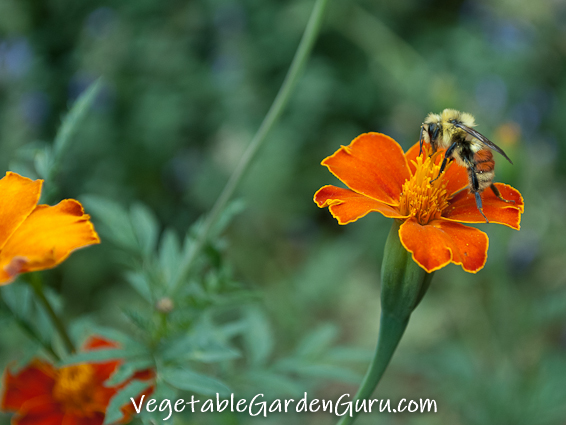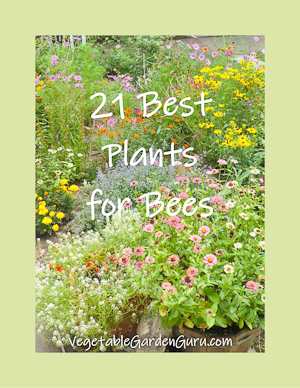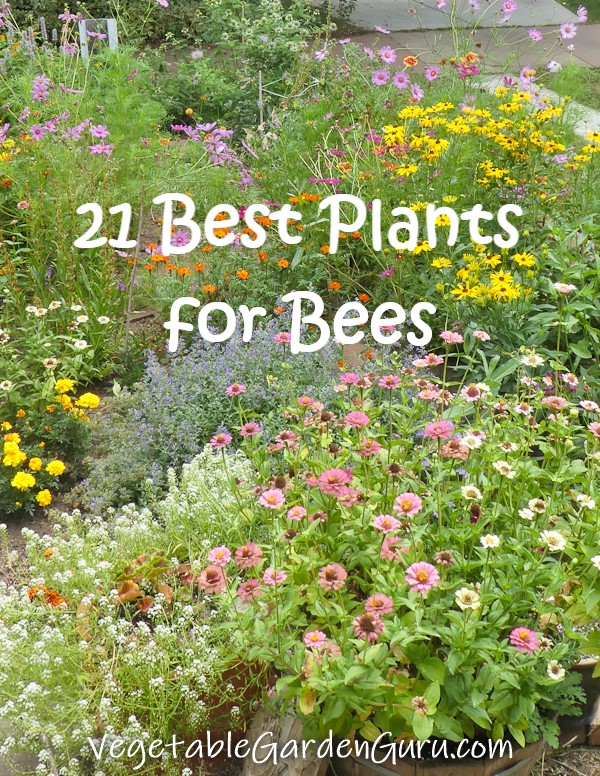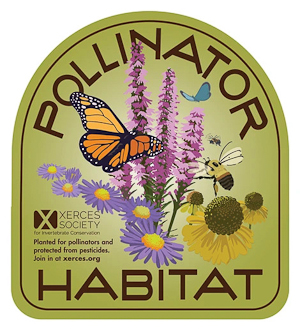- Home
- Pollinators
- How to Attract Bees
- Best Plants for Bees
Best Plants for Bees
The best plants for bees depends somewhat on what kind of bees you want to attract, what region you live in, and the character of your yard. But there are lots of commonly-available annuals and perennials that will feed both native bees and honeybees throughout the season.
 Hunt's Bumblebee on a French Marigold
Hunt's Bumblebee on a French MarigoldUntil I planted a few native prairie perennials in my front flowerbed, I had no idea
how many different kinds of wild bees were around!
I am now half-crazed about wild, native bees - they are
absolutely beautiful and fascinating - and sadly, some are now even in danger of going extinct.
So in addition to the garden-variety plants that feed most bees, I hope you will consider adding some plants that are native to your region to help support wild pollinators like mason bees, sweat bees, bumblebees, leafcutter bees and others. The free downloadable PDF on this page features 21 plants that all bees love, as well as links to three pollinator organizations that have region-specific plant finder tools.
Something I didn't realize when I first became fascinated by pollinators is that many of the modern hybrid flowers developed by plant breeders for our delight are useless to bees and other pollinators because the nectar is inaccessible under all those double and triple petals! So make sure your flower choices are also the bees' choice.
Best Plants for Bees:
Know the differences between honeybees and wild bees.
Honeybees are not native to the US. They came arrived in the New World with the first settlers from Europe, to pollinate the food crops they also brought with them. Honeybees are not the most efficient pollinators, but they are the dominant species now because they live communally in large colonies, make more honey than they need, and can be conveniently moved out of the way when orchardists spray poisons.
Wild bees include blue orchard bees (aka "mason" bees), sweat bees, leafcutter bees, bumblebees and many others. Because they are "fuzzier" and have bristles all over their bodies, they are 60 times more efficient at pollination than honeybees. They are solitary rather than communal bees, and each female makes her own nest where she lays eggs. She lays them, one at a time, each atop its own little prepared food bundle of honey and pollen. It is therefore impossible to commercially harvest honey from wild bees.
Best Plants for Bees:
Related Pages
Attracting bees is about more than planting the right plants. You can learn about other ways to attract them at my How to Attract Bees page.
If you want to support pollinators of all kinds, including butterflies and hummingbirds, and also learn about why they are in trouble, you can find out more at my Pollinators page.
Help share the skills and spread the joy
of organic, nutrient-dense vegetable gardening, and please...
~ Like us on Facebook ~
Thank you... and have fun in your garden!
Affiliate Disclaimer
This website contains affiliate links to a few quality products I can genuinely recommend. I am here to serve you, not to sell you, and I do not write reviews for income or recommend anything I would not use myself. If you make a purchase using an affiliate link here, I may earn a commission but this will not affect your price. My participation in these programs allows me to earn money that helps support this site. If you have comments, questions or concerns about the affiliate or advertising programs, please Contact Me.Contact Us Page



